
Every book on the shelves had to be removed, individually vacuumed, and returned to the shelf in order.
Ten thousand books. Three-hundred-and-twenty hours. Four vacuum cleaners. One suitcase full of bricks. That is what it took to clean up after a construction project at the University of Nebraska Medical Center.
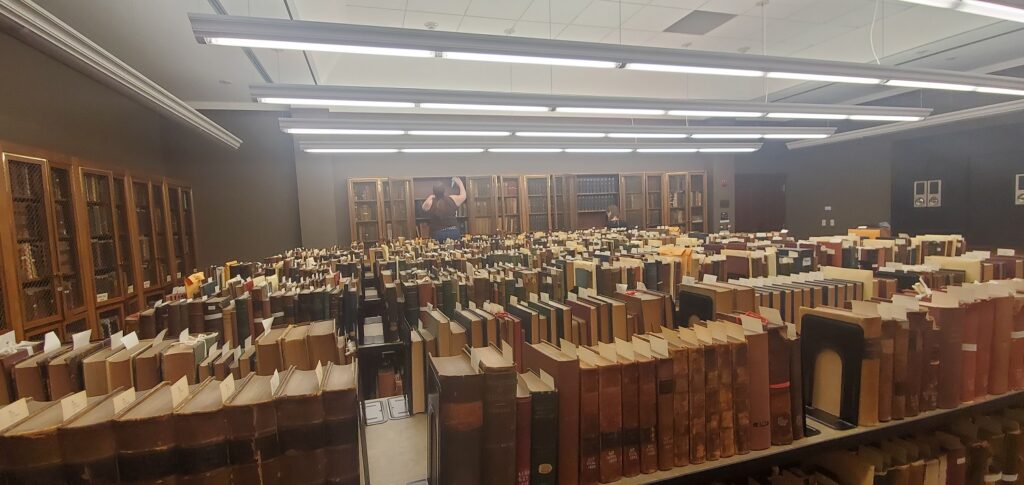
Rows of shelves in the Rare Book Room waiting to be vacuumed.
Renovations in the building that houses the McGoogan Library Rare Books Rooms sent fine particulate matter in the form of drywall dust all over the rare book collection. The rooms were not undergoing any construction, and thus were closed off to safeguard the collection. However, the fine drywall dust was pushed into the rooms through the HVAC ventilation system. It was not known to Library staff at the time, but the book storage cabinets are not sealed, which allowed for drywall dust to settle on collections materials housed within.
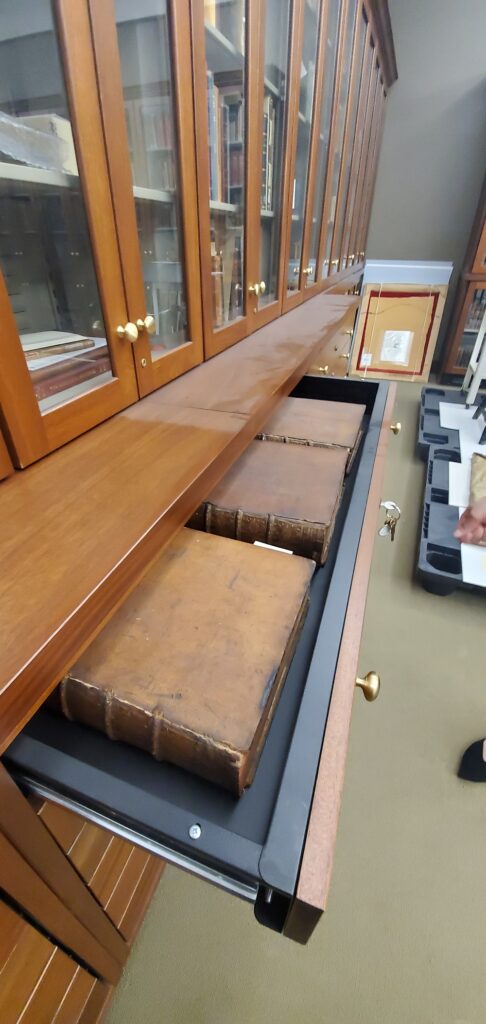
Even the drawers couldn’t protect the books from the fine dust particles.
During renovations, the room was also used as a temporary storage space for various artifacts. These include paintings, metal medical instruments, architectural fragments, and additional flat and bound paper artifacts. These items were not covered with protective sheeting or other material.
The two Rare Books Rooms function primarily as a storage space, and one is used occasionally to host small library events. There is a total of 10,500 books stored in both rooms: 4,200 of these books are considered rare and the oldest date to the 1300s.
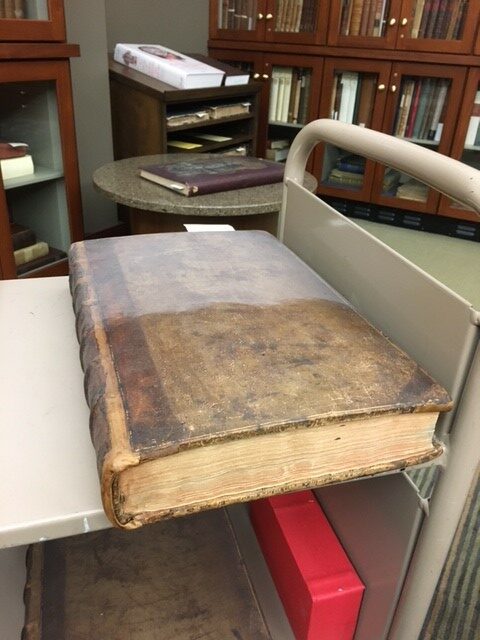
Half of the dust on this book has been removed to show the amount of dust that accumulated on the collection.
Drywall dust components can include gypsum, silica dust, paper, clay, resins, and mica. The fine, coarse dust is gritty to the touch, which can cause abrasions and surface damages to book cases. Particulate matter and dust is also hygroscopic in nature, which means it attracts moisture. Moisture attracts mold and pests that eat organic materials, like paper, leather, and the adhesives used to bind books. Beyond damage to the books, breathing in silica and mica particulate matter is dangerous for the lungs.
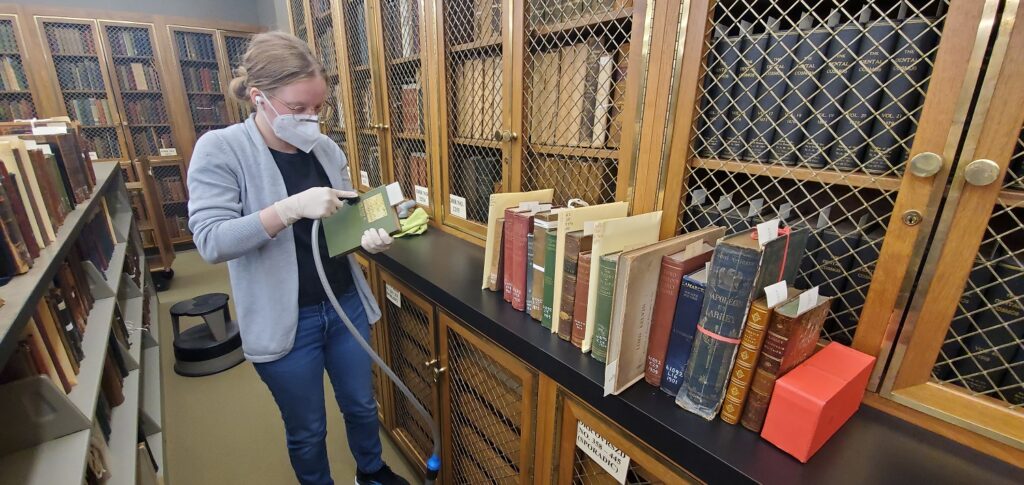
UNMC Staff helped the Ford Center Staff each day. Bricks wrapped in bookcloth (seen in red) were used to support the books when they were moved off the shelf for cleaning.
Each of the books needed to be removed in order, one shelf at a time, and cleaned. Cleaning was done with Nilfisk HEPA-Filtration vacuums and small brush attachments, which trap particulate matter rather than recycling it back into the air. Books were individually vacuumed on areas that were exposed to the drywall dust; this includes the cases (covers and spine) and head and fore edge (top and side). All the shelving and doors were vacuumed as well and wiped down with a microfiber cloth.
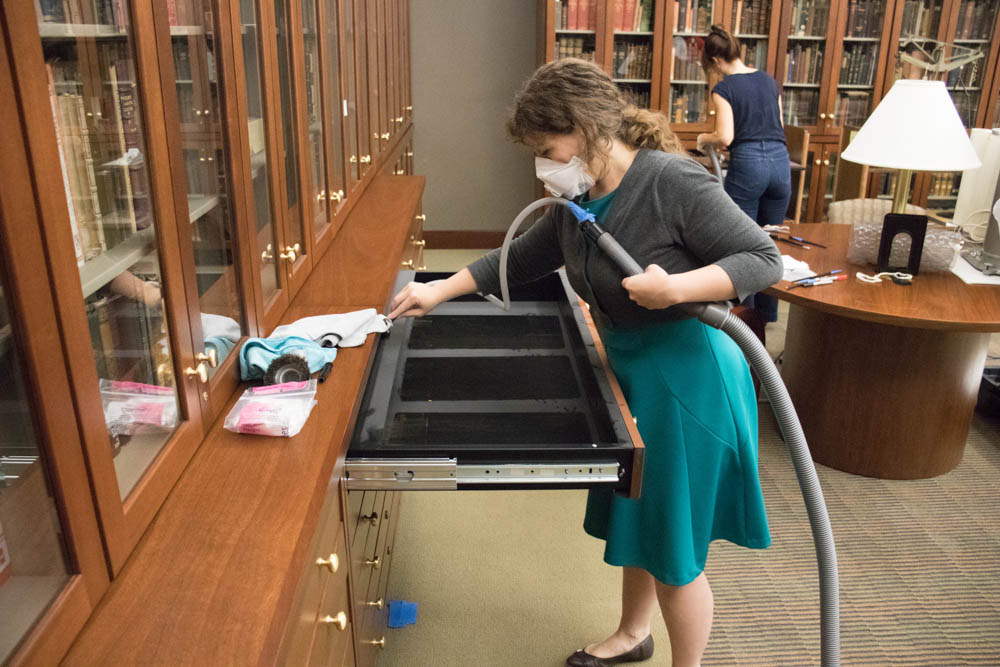
Hilary LeFevere, Paper Conservator, cleans out one of the drawers after the books have been removed. Right: Vonnda Shaw, Conservation Technician, vacuums the spines of a shelf worth of books.
The project was divided into two stages. The first room took four people a five days to vacuum and the second room took eight days. With audio books, podcasts, and lattes from the new Dunkin Donuts downstairs in the building, the staff maintained their sanity and all the books were safely returned to their newly cleaned shelves.
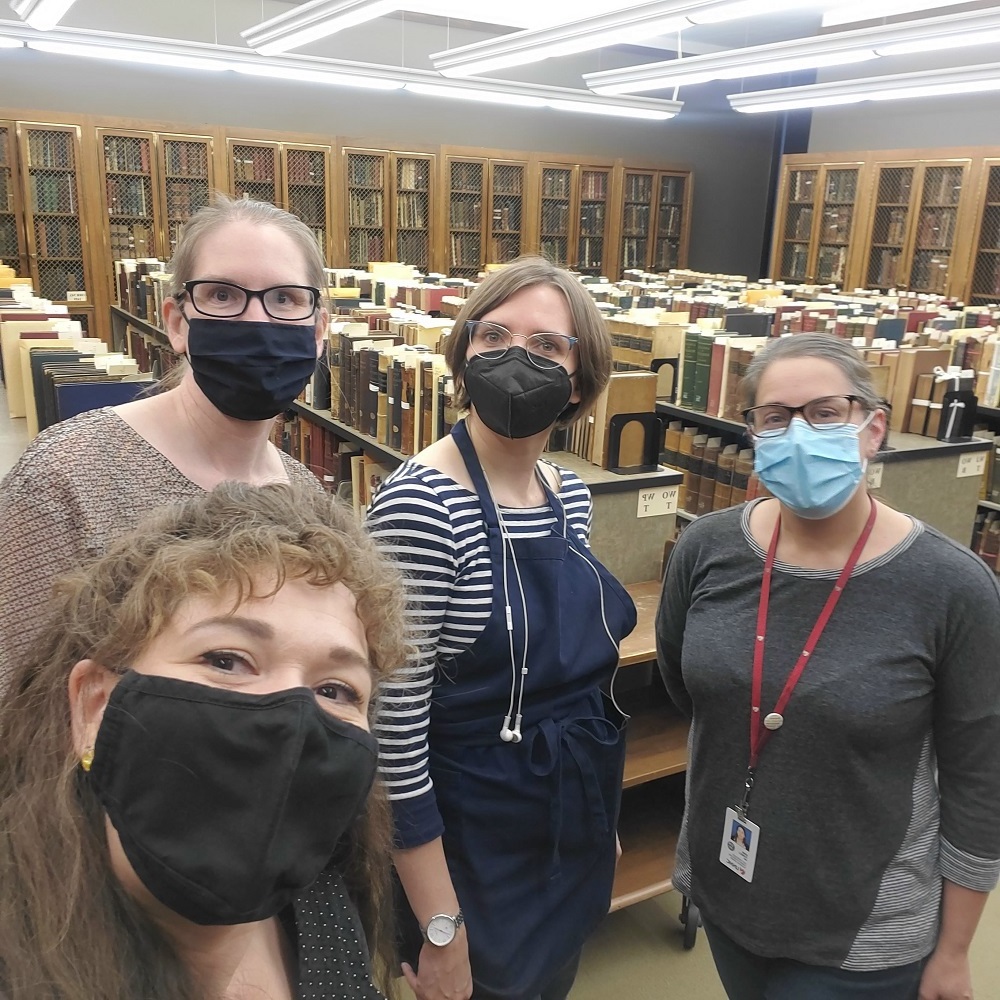
Hilary LeFevere, Vonnda Shaw, Megan Griffiths (Conservation Technician), and UNMC Rare Book Librarian Erin Torell, mark the end of three weeks worth of work!



